Affiliate disclosure: This post may contain affiliate links. Please see our Privacy Policy.
Roasting your own coffee at home is surprisingly simple.
Though you can buy an expensive coffee roasting appliance, all you really need is a burner and a cast iron pan.
There are plenty of reasons to roast your own beans.
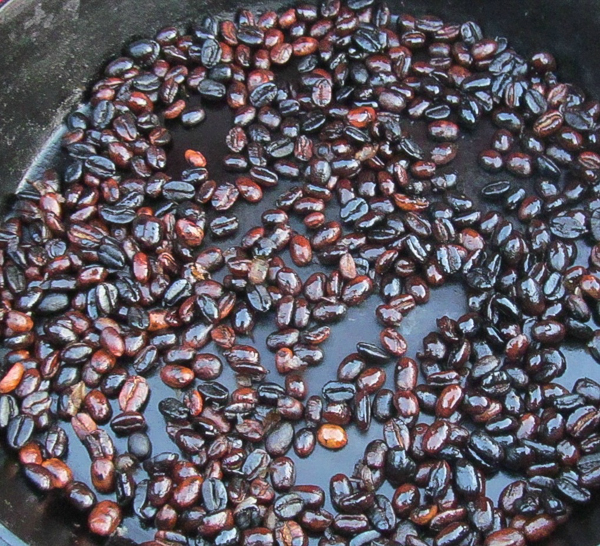
Why Roast Coffee at Home?
Preparedness – Green coffee beans keep almost forever, which means if you stock up you’ll never have to worry about running out of coffee. This is especially important for short-term supply disruption like a blizzard or long-term supply disruptions like natural disasters or worse.
Taste – Roasting your own coffee means that you’ll have the freshest brew possible. While green coffee beans keep for years, roasted coffee begins to go stale in as little as a week. If you buy your beans at the grocery store, stale coffee might be the only coffee you know.
Variety – While the grocery store or even specialty food store may only stock a few varieties of coffee, green beans are available in just about every origin and type available with just the click of a button online. Never tasted the subtle nuance of Tanzanian Peaberry? Now’s you’re chance!
Cost – Green coffee beans are dramatically cheaper than buying pre-roast coffee. Generally, green coffee beans are a little less than half the cost of roasted coffee beans. At the time of this writing, locally roasted coffee sells for about $16 per pound, where the same quality green beans can be purchased for as little as $6 to $8 per pound including shipping.
Self Reliance – Roasting your own coffee puts you one step further on your journey toward self-reliance. It’s a simple art, but once you’ve mastered it you’ll enjoy finding just the right roast level for every different coffee bean variety you try.
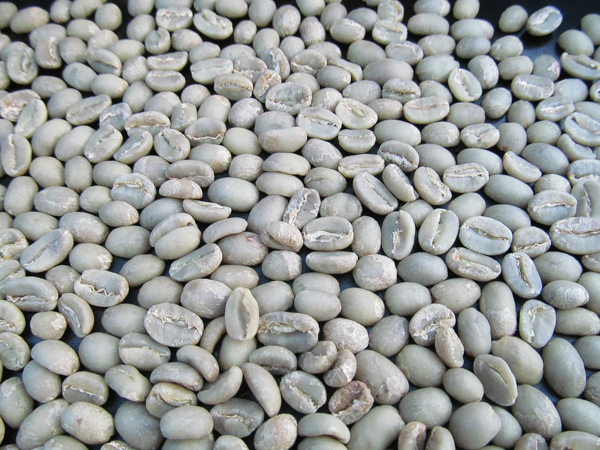
How Long Do Green Coffee Beans Stay Fresh?
If kept cool and dry, coffee can sit in burlap sacks for up to 2 years without losing quality. Over extended periods of time, it tends to absorb smells and tastes from its surroundings, so if it’s going to be stored longer than that it’s best to vacuum seal it and keep it as cool as possible. Some large scale roasters comfortably use burlap stored beans for as many as 5 years, but those are generally the cheap, pre-ground canned grocery store coffees.
To be on the safe side, try not to buy more than you can use in a year. That still amounts to a lot of beans, so be sure you’re committed to roasting if you choose to buy in bulk. For a couple that each drinks several cups per day, a year’s worth would be around 50lbs of green coffee beans.
Roasting Coffee in a Cast Iron Pan
Cast iron works well for roasting because it evenly distributes heat without hotspots that can lead to burned beans and a scorched roast.
Ideally, use a pan that will just be used for roasting coffee. Cast iron gets seasoned by the food that’s cooked in it, and bacon cooked in your cast iron will come through in your coffee roast. Similarly, the coffee taste will flavor the next dozen things you cook in your cast iron after roasting green coffee beans.
Unless you have a particularly efficient exhaust fan, it’s best to roast beans outdoors. The roasting process is very smokey and can set off smoke alarms if done indoors without extensive ventilation.
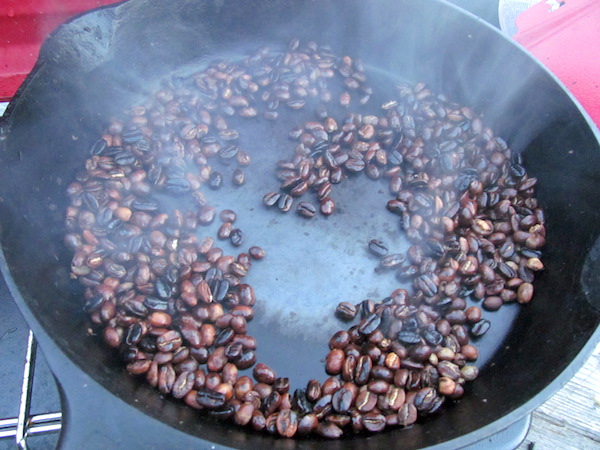
You’ll need a cast-iron pan, outdoor camp stove, pot holder, metal colander, and either a wooden spoon or whisk to stir the beans. If you get a nifty cast iron pan with a silicone handle it makes it much easier to tend the beans without burning your hand.
Begin with a small amount of green coffee beans, about a half-cup. The amount will depend on your pan, but they’ll need to be in a single layer so they’re all in contact with the pan. You’ll want a little less than a full layer so that you can easily stir them and still keep them in a single layer.
Pre-heat your pan on the stove until it’s quite hot, around 500 degrees.
Once the pan is preheated, pour in the beans and stir. The beans should stay moving, with slow deliberate stirring. Many people find a whisk works well because it turns the beans and tosses them around in the pan a bit to ensure more even roasting, but a wooden spoon works great too.
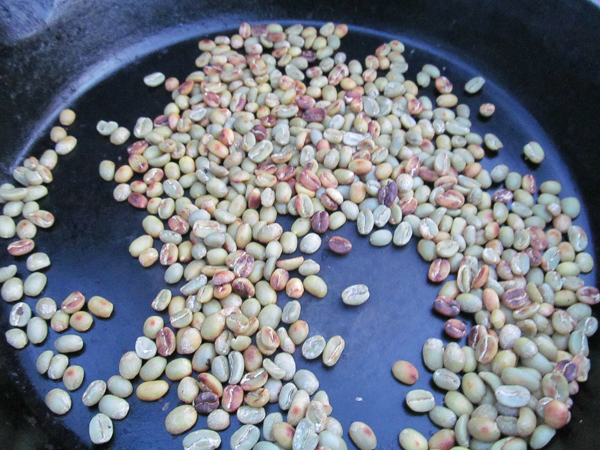
The coffee will take 8 to 10 minutes to roast, depending on how dark you take your brew. The beans start out green, but as they roast they’ll turn yellow, then light brown, and then dark brown. If they’re starting to darken unevenly, adjust the heat and keep stirring so they develop a uniform color.
After about 5 minutes the beans will begin to make a popping sound like popcorn. In coffee roasting this is called the “first crack” and shortly after this point, the beans are technically drinkable. Personally, I think that the beans at this point have a “green” taste to them and I’d continue roasting for quite a while longer.
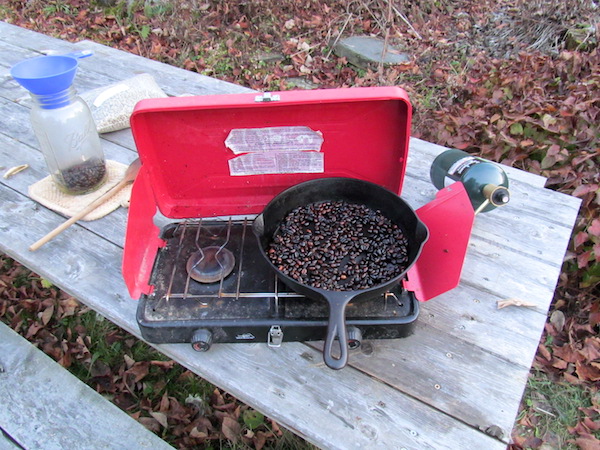
When the beans change from light brown to dark brown you’ll heat a “second crack” as they go through the popping process again. At this point, you can continue to roast but the beans are at increased risk of burning.
Dump the beans out of the pan into a metal colander and stir until cool. The beans will continue to cook until completely cool, so cooling quickly is important to avoid over roasting. The coffee will lose papery chaff during this cooling process, so stir it over a bowl or outside to avoid making a mess.
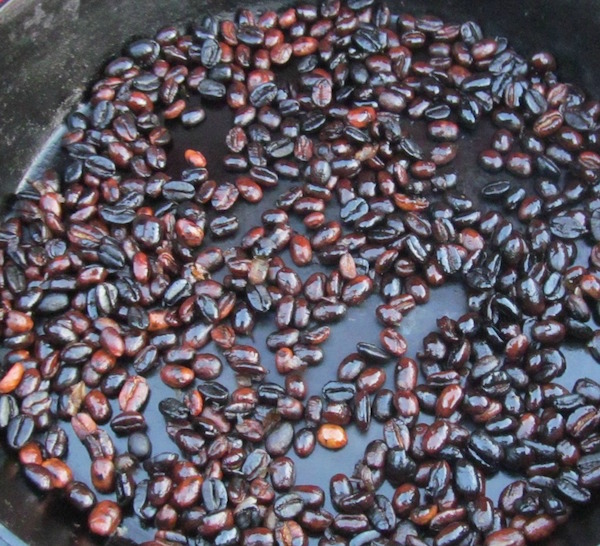
The freshly roasted coffee needs to off-gas to complete the roasting process, so leave it open to the air for at least 4 hours or overnight. In the morning, it’ll be ready to brew or store in an airtight container.
Freshly roasted coffee will keep in an airtight container for about a week before it begins to go stale. It goes stale much faster exposed to the air. Avoid coffee kept in bulk bins at health food stores for that reason.
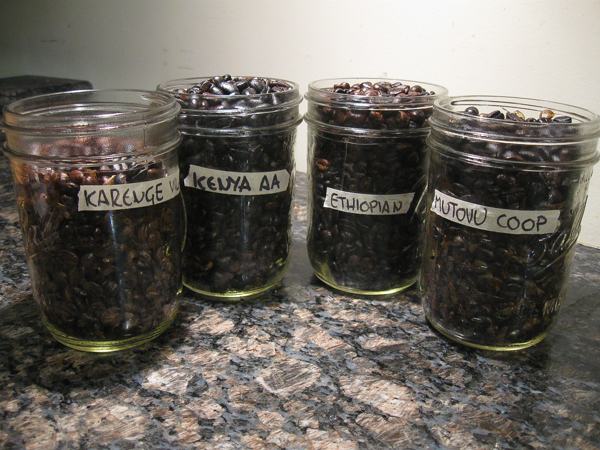
A few important things to note when you’re following the roasting method described above. I’m using a small camp stove that has a relatively low BTU output. In order to get the pan very hot, a camp stove has to be all the way up high. If you’re using an outdoor high output propane burner that has enough power to deep fry a turkey, obviously use a lower setting.
Similarly, if you’re roasting coffee indoors on the stove, which I don’t recommend because of the smoke, use medium heat because most kitchen stoves put out a lot more power than a little camp stove.
I recently came across a video from a group of 18th-century historical reactors that describes in detail the process of roasting coffee in a cast iron pan over an open fire. Even if you’re using a camp stove outdoors instead of an open fire, the process is the same. Sometimes a video is worth a thousand words, so here you go for the visually oriented.
Where Do You Buy Green Coffee Beans?
Amazon has a great selection of green coffee beans from around the world for the home roaster. Experiment with different countries of origin and different producers. Everyone’s coffee palate is different.
Personally, I prefer coffee from Africa with rich earthy flavors such as Tanzanian Peaberry or Ethiopian Yirgacheffe. Others in my family will only drink South American coffee like Nicaraguan or Guatemalan, preferring their bright acidity. Start with coffee from a country you know you love and branch out from there.
More Cast Iron and Campfire Cooking
- How to Make Coffee Over an Open Fire
- How to Bake Banana Bread in a Dutch Oven
- How to Bake a Pie in a Dutch Oven
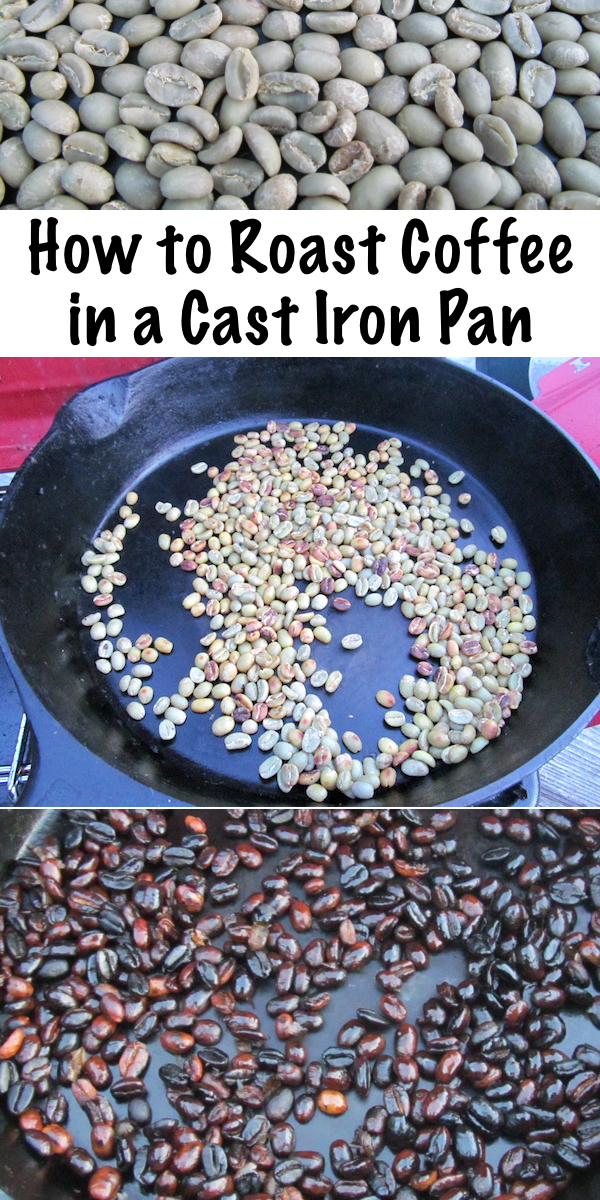
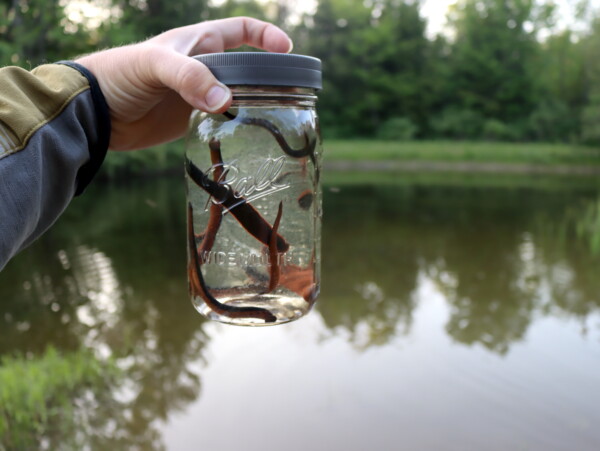
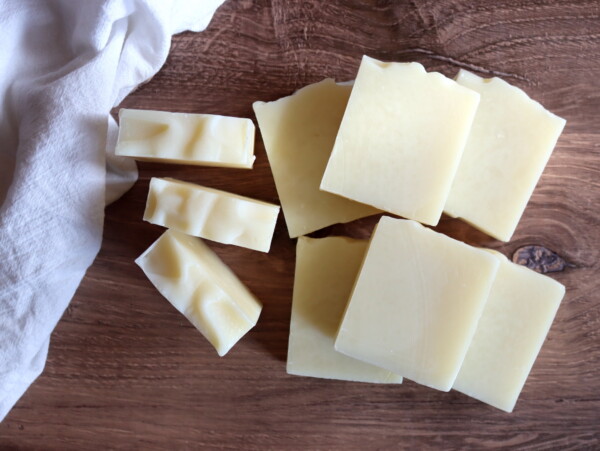
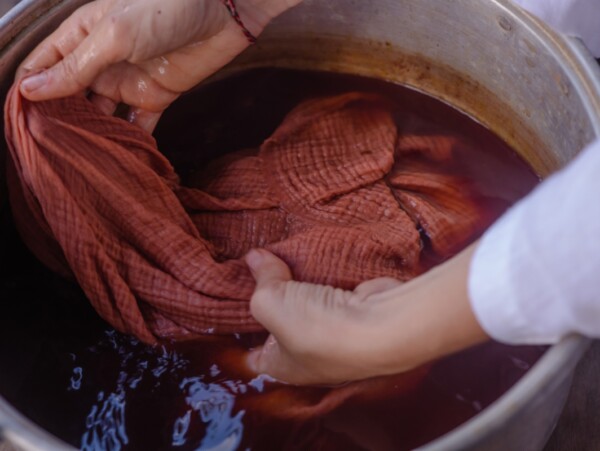
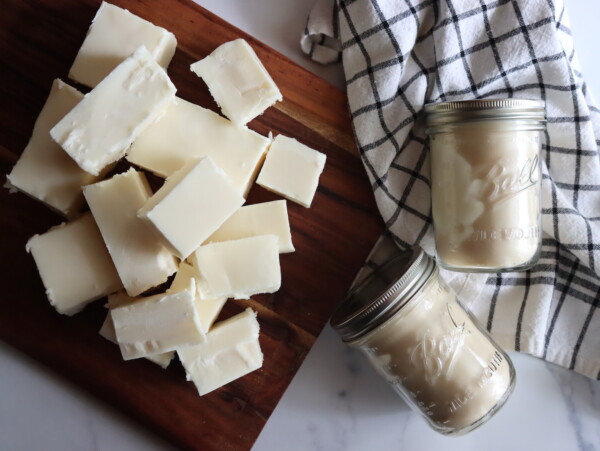










Hi have you ever canned cold brew coffee?
Coffee, believe it or not, isn’t usually quite acidic enough for waterbath canning. At least not dependably. The stuff you buy in the store is batch tested to make sure it’s acidic enough, and if not, they add citric acid to bring the pH down. It’s not something you can do safely without pH test strips and a good bit of technical knowledge.
My wife is from Brazil and her family lives near some of the world’s best coffee beans, so I’m beginning to import green coffee beans. We’ve found one Arabica in particular that is amazing, scoring 85+ out of 100.
At this point, we’re only able to offer 30KG at a time, which is about 66 pounds. This is more than the average couple would drink in a year, so if you want to buy it you can use some of the roasted beans as gifts for others.
My wife’s family name is Lucatelli, thus the name of the beans.
Happy Roasting!
What a great opportunity to be able to access coffee beans like that.
Trying this method, on a grill with cast iron on direct heat, it took like 1.5 hours for the beans to get to a light roast and I never heard a ‘crack’. Did I do something wrong?
Maybe it doesn’t put out enough heat? The entire process takes about 10 minutes and they start to turn colors very quickly.
My estimation is that the heat getting to your pan was insufficient. You need your pan scalding hot. Most say 400-500 degrees. I start there and near first crack, I get some unevenness and I drop the temp some, moving the beans constantly with a whisk. I’ve done it this way about a dozen times (I used an air popcorn popper for years, but batches are small) so I’m no pro, but my “aha!” moment was figuring out that a short, hot, fast roast time GENERALLY gets better results for my taste. Long and slow doesn’t make for great coffee I usually roast to the bean supplier’s recommendation and prefer medium roasts up to city plus.
not quite sure about your math, there’s plenty of roasted coffee beans lots cheaper than your links. Here in France I pay 5 euros/Kg, and it’s nice stuff. Green beans are mail order only and are 20 euros plus.
Wow. That would be nice. Maybe it’s because we’re so rural, but green beans are $6 to $8 per pound when we order them online usually, but the roasted beans we can get fresh locally are at least $16 per pound at the moment. Looking at the “roasted” dates on those, they’re almost always at least a month old already too.